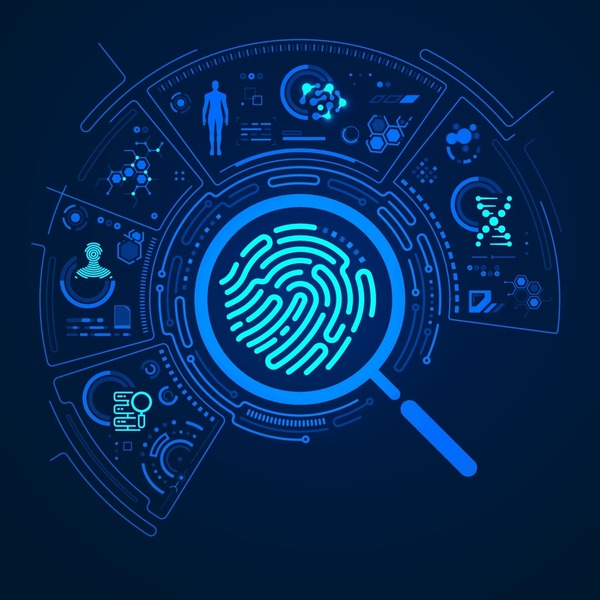In our pockets, we carry a complete digital chronicle of our lives. Our smartphones are intimate repositories of conversations, locations, financial transactions, photos, and personal thoughts. For law enforcement and legal investigators, these devices are often the most critical source of evidence in a case. However, the sheer volume of data—often terabytes per device—has created a monumental challenge. Manually sifting through this digital haystack for the needle of evidence is a slow, expensive, and often overwhelming task. This is where Artificial Intelligence is stepping in, promising to revolutionize the field of digital forensics. This seismic shift is a central topic in AI Phone & Mobile Devices News, bringing with it a powerful combination of unprecedented efficiency and profound ethical dilemmas. This article delves into the technology powering AI-driven mobile device analysis, its real-world applications, and the critical ethical tightrope that society must navigate as we deploy these powerful tools in the pursuit of justice.
The Anatomy of an AI Digital Detective
The transition from traditional digital forensics to AI-powered analysis represents a fundamental change in methodology. For years, forensic analysis relied on human investigators manually executing keyword searches, painstakingly reconstructing timelines from metadata, and visually inspecting thousands of images. While effective to a degree, this approach is easily overwhelmed by the scale of modern data and is susceptible to human error and oversight. AI introduces a layer of intelligent automation that can process, categorize, and analyze information with superhuman speed and precision.
From Brute Force to Intelligent Analysis
Traditional methods are akin to using a simple metal detector over a vast field; you might find what you’re looking for, but you’ll also dig up a lot of junk. AI, in contrast, is like having a team of expert archaeologists who can infer where to dig based on subtle patterns in the landscape. Instead of just searching for the word “meet,” an AI can understand the context of a conversation, identify the sentiment, and flag a discussion about a clandestine meeting, even if the specific keyword is never used. This leap from simple data retrieval to contextual understanding is the core of the AI revolution in forensics.
Core AI Techniques at Play
Several key AI technologies form the backbone of these modern forensic tools:
- Natural Language Processing (NLP): This is the same technology that powers sophisticated AI Assistants News headlines. In forensics, NLP models are trained to parse and understand human language from text messages, emails, social media posts, and documents. They can perform sentiment analysis to gauge the emotional tone of a conversation, identify key entities (people, places, organizations), and map out communication networks to reveal relationships between individuals.
- Computer Vision and Object Recognition: A cornerstone of AI Cameras News, computer vision algorithms can scan tens of thousands of images and video files in minutes. These systems can automatically identify objects of interest (such as weapons, illicit substances, or specific brands), recognize faces against a database, and even identify locations by matching landmarks in photos to satellite imagery. This capability, often discussed in AI-enabled Cameras & Vision News, can instantly surface a single incriminating photo from a device containing a lifetime of memories.
- Pattern Recognition and Anomaly Detection: Machine learning models excel at identifying subtle patterns in large datasets that would be invisible to the human eye. In a forensic context, this could mean detecting an uncharacteristic gap in location data, flagging an unusual series of financial transactions, or identifying a sudden shift in communication behavior that precedes a criminal event. This is a critical application also seen in the world of AI Monitoring Devices News.
The Role of Edge AI vs. Cloud Processing
The computational demands of AI forensics are immense. While some initial triage and data extraction may occur on specialized hardware at the source—a concept central to AI Edge Devices News—the deep, intensive analysis is typically performed on powerful cloud-based platforms. This allows investigators to leverage virtually unlimited computing power to run complex models across multiple evidence sources simultaneously, correlating data from phones, laptops, and even AI Security Gadgets News feeds.

AI in the Field: From Crime Scenes to Courtrooms
The theoretical capabilities of AI are translating into tangible impacts on active investigations. Law enforcement agencies and legal firms are increasingly adopting these tools to accelerate case resolution and uncover evidence that might otherwise have been missed. These real-world applications highlight the transformative potential of AI in the legal system.
Accelerating Investigations: The Race Against Time
In time-sensitive situations, speed is paramount. AI can reduce weeks of manual labor to mere hours, providing investigators with actionable intelligence when it matters most.
- Case Study: A Missing Persons Investigation. Upon recovering the missing person’s phone, an AI tool can immediately begin its analysis. Within an hour, it might construct a detailed timeline of the last 48 hours, cross-referencing GPS data, cell tower pings, Wi-Fi connections, ride-sharing app receipts, and calendar appointments. Simultaneously, its NLP module could flag anxious or fearful conversations, while computer vision scans for recent photos that might reveal the person’s last known location or companions. This rapid intelligence allows investigators to act decisively, a stark contrast to the days or weeks it would take a human analyst to piece together the same information.
- Case Study: A Complex Financial Fraud Ring. In a case involving multiple suspects and devices, AI can ingest and correlate data from all sources. It can map out the communication network, identifying the central figures and their subordinates. By analyzing banking apps, encrypted messages, and spreadsheets, the AI can trace the flow of illicit funds and flag keywords related to the criminal enterprise, providing prosecutors with a clear and comprehensive overview of the entire operation. This level of analysis is becoming relevant even in corporate settings, echoing trends in AI Office Devices News.
Uncovering Hidden Evidence: The “Digital Smoking Gun”
Beyond speed, AI’s primary advantage is its ability to find connections a human might overlook. It can analyze data from a suspect’s smartwatch, a topic often covered in Wearables News, or GPS tracks from a workout app, a focus of AI Fitness Devices News, and correlate that with other device data to place a suspect at a crime scene. It can identify a person of interest from a blurry reflection in a photograph or reconstruct deleted data fragments that a standard search would miss. This ability to connect disparate data points from an ever-expanding ecosystem of AI Sensors & IoT News is what makes AI a game-changing forensic tool.
Walking the Ethical Tightrope: The High Stakes of AI Forensics
The power and efficiency of AI in mobile forensics come with significant ethical and legal challenges. Deploying this technology within the justice system, where the stakes involve liberty and lives, requires extreme caution. The very algorithms designed to find truth can, if unchecked, become instruments of bias and injustice.
The Specter of Algorithmic Bias
An AI model is only as good as the data it was trained on. If the training data reflects societal biases, the AI will inherit and amplify them. For example, an NLP model trained primarily on standard English might misinterpret regional dialects, slang, or African-American Vernacular English (AAVE), potentially flagging innocent conversations as suspicious. Similarly, facial recognition systems have been shown to have higher error rates for women and people of color, creating a risk of false identification. This isn’t a theoretical problem; it’s a documented flaw that could lead to wrongful arrests and convictions. It mirrors concerns seen in other high-stakes fields like Autonomous Vehicles News, where algorithmic failure can have fatal consequences.

The Erosion of Privacy
When police use AI to analyze a device, they are not just looking at evidence relevant to a specific crime. The AI scans everything: intimate conversations with partners, private medical information, political views, and personal photos. This is particularly concerning when applied to the devices of victims and witnesses, whose privacy is breached in the name of the investigation. This creates a “digital dragnet” that vacuums up vast amounts of sensitive, irrelevant data, raising serious Fourth Amendment questions about the scope of search warrants in the digital age. This issue is part of a larger societal debate fueled by the proliferation of data-collecting devices, from AI Pet Tech News to Smart Home AI News.
The “Black Box” Problem in Court
One of the most significant legal hurdles is the issue of explainability. Many advanced AI models, particularly deep learning networks, operate as “black boxes.” They can produce a highly accurate result, but the exact logic or “reasoning” behind their conclusion can be opaque even to their creators. How can a defense attorney cross-examine an algorithm? If an AI flags a piece of data as the “smoking gun,” but no one can explain precisely *why* it was flagged over thousands of other data points, can it be considered reliable evidence in a court of law? This lack of transparency challenges the fundamental principles of due process and is a hot topic in AI Research / Prototypes News.
Navigating the Future: Guidelines for Responsible Implementation
.png)
To harness the benefits of AI in forensics while mitigating its risks, a robust framework of oversight, transparency, and human-centric design is essential. The goal should be to augment human intelligence, not to abdicate judicial responsibility to a machine.
Establishing Robust Oversight and Transparency
- Tip 1: Mandate a “Human-in-the-Loop.” AI should be treated as a powerful investigative assistant, not a final arbiter. Its findings should be used to guide human analysts, who must verify the evidence and make the final determination. Every AI-surfaced lead must be subject to human scrutiny and confirmation.
- Tip 2: Demand Auditable and Explainable AI (XAI). Law enforcement agencies must prioritize and procure AI systems that are not “black boxes.” They must be able to produce auditable logs and explain, in understandable terms, the factors that led to a particular conclusion. This transparency is non-negotiable for courtroom admissibility.
- Tip 3: Implement Rigorous and Continuous Testing. Before deployment, AI forensic tools must be rigorously tested against diverse, real-world datasets to identify and mitigate biases. This testing must be ongoing, with regular audits to ensure the system’s performance remains fair and accurate over time.
The Trajectory of AI in Mobile Forensics
The future will see even deeper integration of AI. We can anticipate AI tools that correlate mobile data with evidence from Drones & AI News footage or smart city infrastructure. The rise of AR/VR AI Gadgets News may allow investigators to walk through AI-generated reconstructions of a crime scene based on data from a victim’s phone. As the technology evolves, the ethical questions will only become more complex, especially as we approach frontiers like Neural Interfaces News, which could one day represent the ultimate privacy battleground.
Conclusion: Justice in the Age of Algorithms
The integration of AI into mobile device forensics is an undeniable and powerful evolution. It offers a necessary solution to the data deluge that currently threatens to overwhelm the justice system, promising to make investigations faster, more efficient, and more capable of uncovering the truth. However, this promise is shadowed by significant risks of algorithmic bias, profound privacy intrusions, and challenges to the core tenets of due process. As this technology becomes more embedded in our legal framework, the central theme of AI Phone & Mobile Devices News shifts from “what can the technology do?” to “how should we control it?”. The path forward demands a dual focus: embracing technological innovation while simultaneously building the strong legal, ethical, and transparent frameworks necessary to ensure that these powerful tools are wielded as instruments of justice, not as automated agents of inequity.










